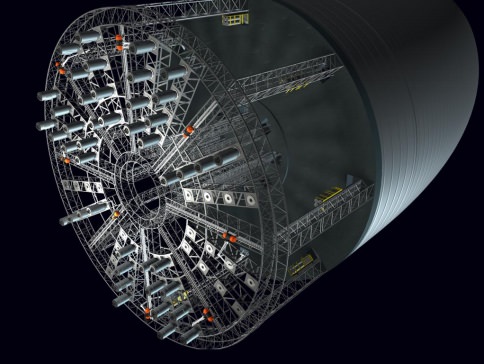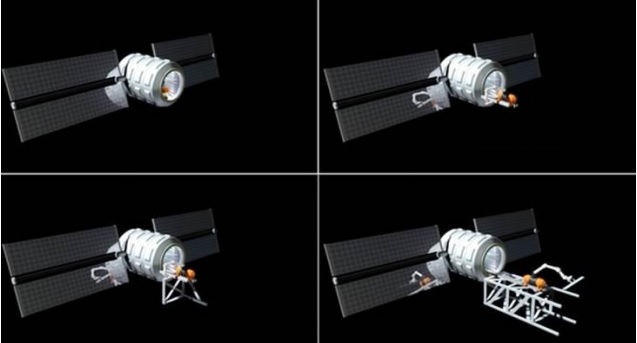Any road trip requires rest stops to refuel and rest. That’s especially true of planetary exploration, as it would take months between destinations. In that spirit, here is a new concept for “Mars truck stops” from the Space Development Steering Committee, which they call “Stairways to Mars.”
For those who aren’t aware, the committee is a coalition of space advocates. Included in the group are the heads of the National Space Society, the Space Frontier Foundation, and the Mars Society, SDSC said, as well as a list of past astronauts, high-ranking NASA employees and others. (The founder is Howard Bloom, who was a former visiting scholar at New York University’s graduate psychology department, among other positions.)
They provide commentary on NASA funding (such as this March article on sequestration). Also in March, the group advertised a White House petition to provide space-based solar power.
So how would a Mars truck stop work? In a nutshell, this is what SDSC proposes:
– Beams are constructed in space “just like a giant erector set”, according to a statement from John Strickland, SDSC chief analyst. This would be accomplished using “robots on rails” that could build the first part, then “extend … its own rails along the beam as it goes.”
– Solar panels are added on to the beam to provide power;
– Components are then added according to need. Pictures from SDSC show items such as fuel tanks on the truck stop. If ambitions soared even higher, the concept could even be built upon to make a larger space colony modelled on “O’Neill colonies”, as shown below.

It should be emphasized that this is a concept, with no funding or firm plans yet, but for what it’s worth the committee says it could move quickly. “These plans are budgeted to cost LESS than the current NASA program for our next step in space — the $40 billion Space Launch System and Orion Capsule. What’s more, the first steps of the Stairway to Mars are achievable in three years,” the committee writes.
One possible location for this kind of truck stop would be at the Earth-Moon L1 Lagrange point, or a spot in space where gravities from different bodies approximately equal each other out and allow an object to hover in place. Lagrange points are already used for several space missions, including the Planck telescope that was just decommissioned.
What do you think of the concept? Let us know in the comments.

